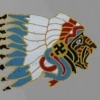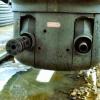Hello everyone!
Sorry for being absence for almost two weeks. It have been quite hectic weeks! Real life caught me, so I had to put projects down for time being. Aat the same time, i needed a short break, a fresh breath and many ideas for bothSF - CAP and Advanced modding (DLL editing).
There is one video that shocked me, let me show you:
X-wing: Tie fighter, got modernized through reverse engineering, which bought improved graphic, VR suports and other amazing feats!
And please note, this sim is from 1993!
This shows me that it is definely possible. However, what I have realized is that, as stated, by using Ghidra to reverse engineer and looking at the pseudocodes, there is one extra challenges:
As stated, the SF2 engine is natively written in C++, not C. So therefore, by editing the C Pseudocodes, we nbeed to carefully codes while remain in the loop of SF2 with the calls and imports, so it will rrun well in SF2. But atleast, C and C++ are somehwere close toe ach other.
C++ is deviated from C, so we have to use extra C codes that work the same way what C++ codes intended to doin SF2.
Nextw eek I am going back working on SF2 - CAP and further exploring advanced modding.
I will post an additional i nforamtion on what tools I use and how I managed to extract the codes out, so you can view it and edit it as well. I use the tool known as Ghidra 11.4 and scripts to help me extracting the codes.
Cheers!











